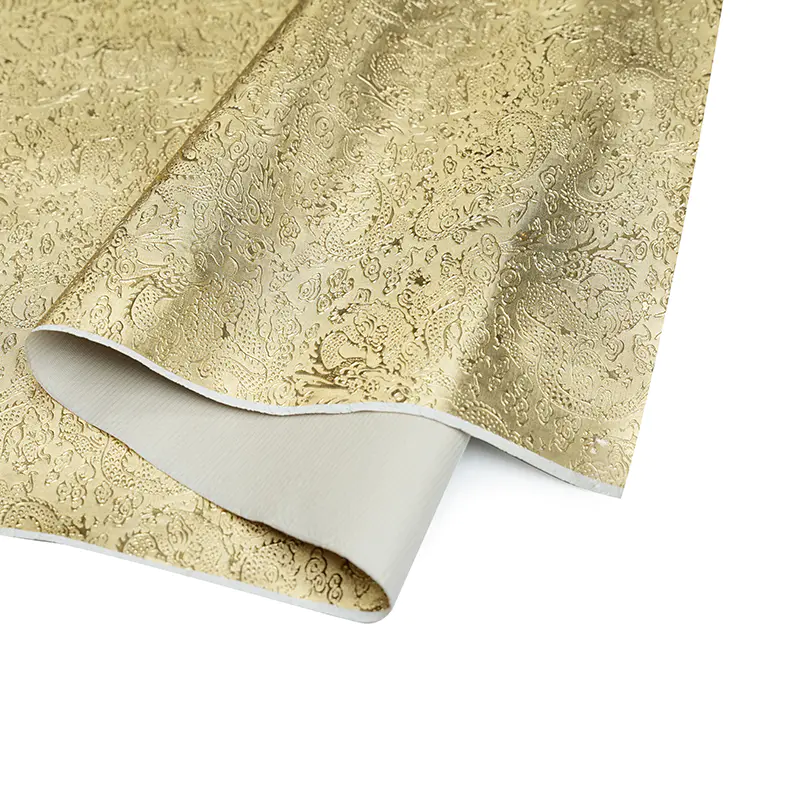PVC artificial leather is a widely used material for bags and luggage. Its basic structure consists of a fibrous base cloth covered with a layer of polyvinyl chloride (PVC) resin, manufactured through a series of processes like calendering, plastification, and printing, often resulting in a surface with leather-like texture and gloss. The prominence of this material in the luggage field stems from its inherent properties. Its advantages and disadvantages become clear when compared to materials like PU artificial leather or genuine leather. The most notable advantage of PVC material is its excellent waterproof performance and high durability. It offers good resistance to water, oil, and common chemicals, and its relatively rigid structure provides better protection for the contents inside, making it particularly suitable for luggage that frequently encounters complex transportation environments. However, its breathability is generally inferior to PU and genuine leather, and its hand feel is relatively harder. In terms of cost, PVC artificial leather typically offers the greatest price advantage, making it an ideal choice for mass production and cost-effective products.
Not all PVC artificial leather bags and luggage are of equal quality; knowing how to discern is crucial. Start with visual and tactile inspection. High-quality PVC leather should have a clear and natural surface grain, uniform color with strong saturation, and should not exhibit an overly cheap glossy feel. To the touch, while it may not be as soft as genuine leather or high-end PU, it should feel smooth and fine, without a sticky or excessively hard plastic feel. Furthermore, a high-quality product should not have a pungent chemical odor when smelled closely, whereas low-quality products often have a strong unpleasant smell. Beyond appearance and touch, pay attention to its physical performance. Inquire about or check parameters such as the abrasion resistance test coefficient (e.g., Martindale test), tear strength, and low-temperature flex resistance. A high-quality PVC bag should withstand frequent friction and compression, have secure seams, smooth zippers, and hardware that resists fading. These details collectively define the overall quality of a durable product.
Proper care can significantly extend the lifespan of your PVC artificial leather bags and luggage. Routine cleaning is the first step in maintenance. For general dust and stains, simply wipe gently with a soft, damp cloth. For more stubborn stains, use a neutral soap solution or a dedicated artificial leather cleaner, applying it with a soft cloth for gentle wiping. Avoid using strong acidic or alkaline cleaners or organic solvents like alcohol, as they can damage the surface coating. After cleaning, allow the item to air dry naturally in a well-ventilated area. Avoid direct sunlight or using a heat source for drying, as high temperatures can cause the material to harden, become brittle, or even deform. For storage, first empty the bag and give it a final wipe with a dry cloth. It's best to stuff the bag with some material to help it maintain its shape. Then, store it in a cool, dry place inside a dust bag, avoiding contact with sharp objects to prevent scratches or permanent creases.
For brands or consumers with customization needs, PVC artificial leather presents a highly attractive option. Its greatest appeal lies in its unparalleled decorative adaptability. It can easily achieve infinite possibilities, from classic animal grains to avant-garde abstract patterns, through printing and embossing processes. Color choices are also extremely rich and vibrant, capable of meeting various brand identities and personalized design requirements. When deciding to use PVC artificial leather for customization, it is essential to communicate key technical parameters thoroughly with the manufacturer. These include the thickness and material of the base cloth, the thickness of the PVC coating, the surface treatment process (such as matte, gloss, oily wax feel, etc.), and compliance with relevant environmental and safety standards (e.g., being free from phthalates). Clarifying these details not only ensures the final product's appearance but also guarantees that its physical performance meets the intended use case, leading to the wisest choice.
